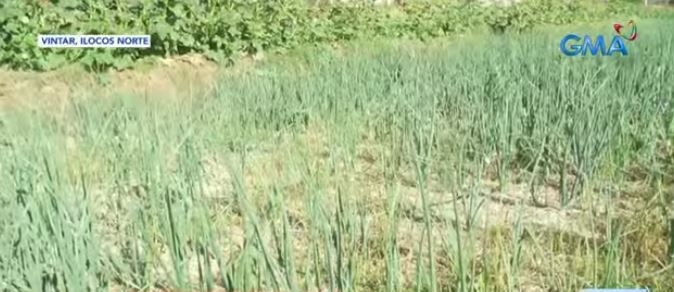NDRRMC: El Niño damage to agriculture now P941M

The damage to agriculture due to the impact of the El Niño phenomenon has increased to over P941 million, the National Disaster Risk Reduction and Management Council (NDRRMC) said Thursday.
In its latest report, the NDRRMC said the production loss and cost of damage in agriculture was estimated at P941,730,702.
Western Visayas reported the highest value of agricultural damage with P564,056,192, followed by Mimaropa with P319,755,957, Ilocos with P54,450,077, Calabarzon with P2,750,947, and Zamoanga with P717,527.
In San Miguel, Bulacan, 25 of the 49 barangays were affected by El Niño. Barangay Sacdalan suffered the most extensive damage in crops with up to 300 hectares of affected plantations.
“Doon naman po sa ibang barangay, may mga hundred hectares din po. Pero sa buong San Miguel po, out of 49 barangays, meron po tayong 25 barangay na naapektuhan po ng El Niño dito sa bayan namin,” San Miguel government’s agriculturist Glenn Ortiz told Unang Balita in an interview.
(In other barangays, there are also hundreds of hectares of damaged fields. But in the entire San Miguel, out of 49 barangays, we have 25 barangays that were affected by El Nino.)
A total of 16,709 farmers and fisherfolks as well as 14,854 hectares of crops were affected in the country due to El Niño.
Ortiz said most of the affected farmers in San Miguel are insured by the Philippine Crop Insurance. As they have already submitted the reports, Ortiz said the company may conduct an inspection for validation this week.
The local government is also planning to establish water impoundment and provide alternative high value crops for the affected farmers.
Farmer Eduardo Domingo said the water supply from the National Irrigation Administration (NIA) stopped as early as January, which resulted in the drying up of their field.
“Sabi hindi na kayang patubigan (They said they cannot supply water anymore),” Domingo said in the Unang Balita interview.
According to the farmers, they usually harvest around March but now their field is still dry as February ends.
Meanwhile, six barangays in Himamaylan, Negros Occidental have reported water shortage for drinking and agricultural use since December 2023, the NDRRMC said.
Also, Zamboanga City implemented a rationing scheme in its west coast and central areas amid limited water supply.
On Monday, the municipal government of Bulalacao, Oriental Mindoro declared a state of calamity due to the impact of the El Niño phenomenon.
The rivers and fields in the town have already dried up, affecting water supply and crops, the municipal government said.
Meanwhile, assistance worth P362,564,850 has been provided to the affected individuals in Mimaropa, the NDRRMC said.
State weather bureau PAGASA declared the start of the El Niño phenomenon on July 4 last year.
The El Niño phenomenon is characterized by the abnormal warming of sea surface temperature in the central and eastern equatorial Pacific Ocean leading to below normal rainfall.
PAGASA recently said the mature stage of the El Niño phenomenon was seen to end this February, but its effects would still be experienced as it gradually decays around the March-April-May period. — Joviland Rita/RSJ, GMA Integrated News

Need a wellness break? Sign up for The Boost!
Stay up-to-date with the latest health and wellness reads.
Please enter a valid email address
Your email is safe with us





